Anti-Colonial Infrastructural Resistance
Archival research around historic forms of anti-colonial infrastructural resistance at the International Institute for Social History (IISG), in collaboration with Omar Jabary Salamance and The Institute for Technology in the Public Interest (TITiPI).
role: archival research and processing, editing, publication design and development
- International Institute for Social History (IISG)
- Omar Jabary Salamance
- The Institute for Technology in the Public Interest (TITiPI)
In 2024, TITiPI commissioned Omar and I to spend time in the archives of IISG to look for visual evidence of creative strategies, community organizing, publishing and concepts for and of infrastructural resistance.
Infrastructural resistance is the abolitionist work of breaking down oppressive infrastructures and at the same time imagining, organizing and/or building up new structures and institutions. But what does this look like? How are infra-struggles presenced visually as part of historical legacies? What visual grammars and aesthetics could transform affective relations to infrastructures?
Our first visit to the archives involved meeting with an expert archivist who gave us a tour and showed us around the inner-workings of the IISG. After this initial visit, we spent time in the archives themselves. This entails the tedious process of searching the online catalogues of the IISG, making requests for entries and fetching them at different intervals during the day.
We came across a folder of pamphlets, flyers and handouts related to Palestinian unions, resistance and labour movements.
Our main findings in the archive ended up being posters, newspaper clippings and photographs revolving around the pluri-vocal efforts in the South African anti-apartheid liberation struggle. We think this has to do with the location of the archive in the Netherlands (and the important presence of Dutch resistance to apartheid through the Komitee Zuidelijk Afrika) as well as the nature of the contents of the IISG's acquisitions: usually focused on international social and political histories and struggles rather than standard national histories.
We decided to roughly organize our findings under three different definitions for modes of infrastructural resistance: trans-national counter-surveillance, labour-union resistances and sabotage.
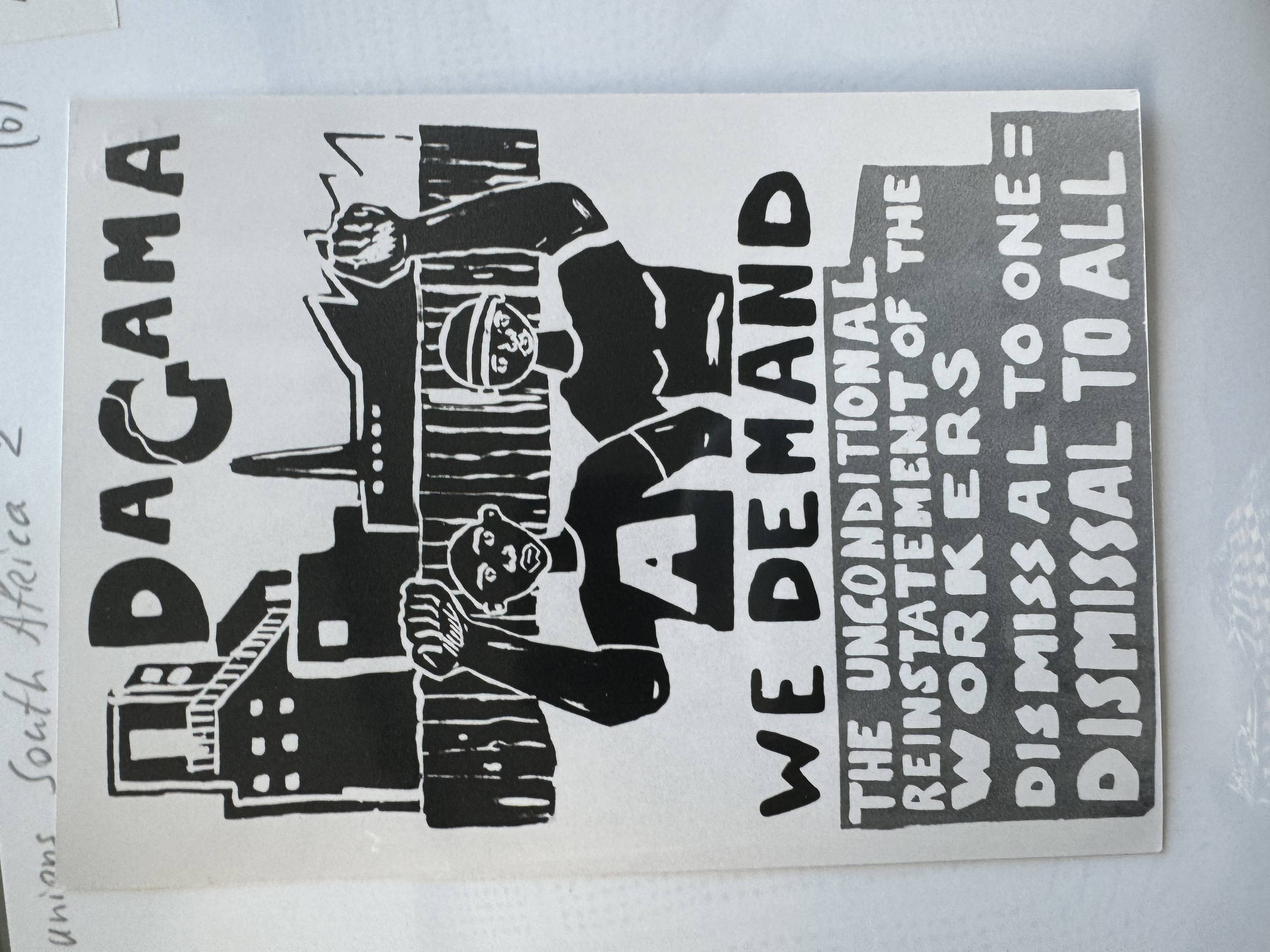
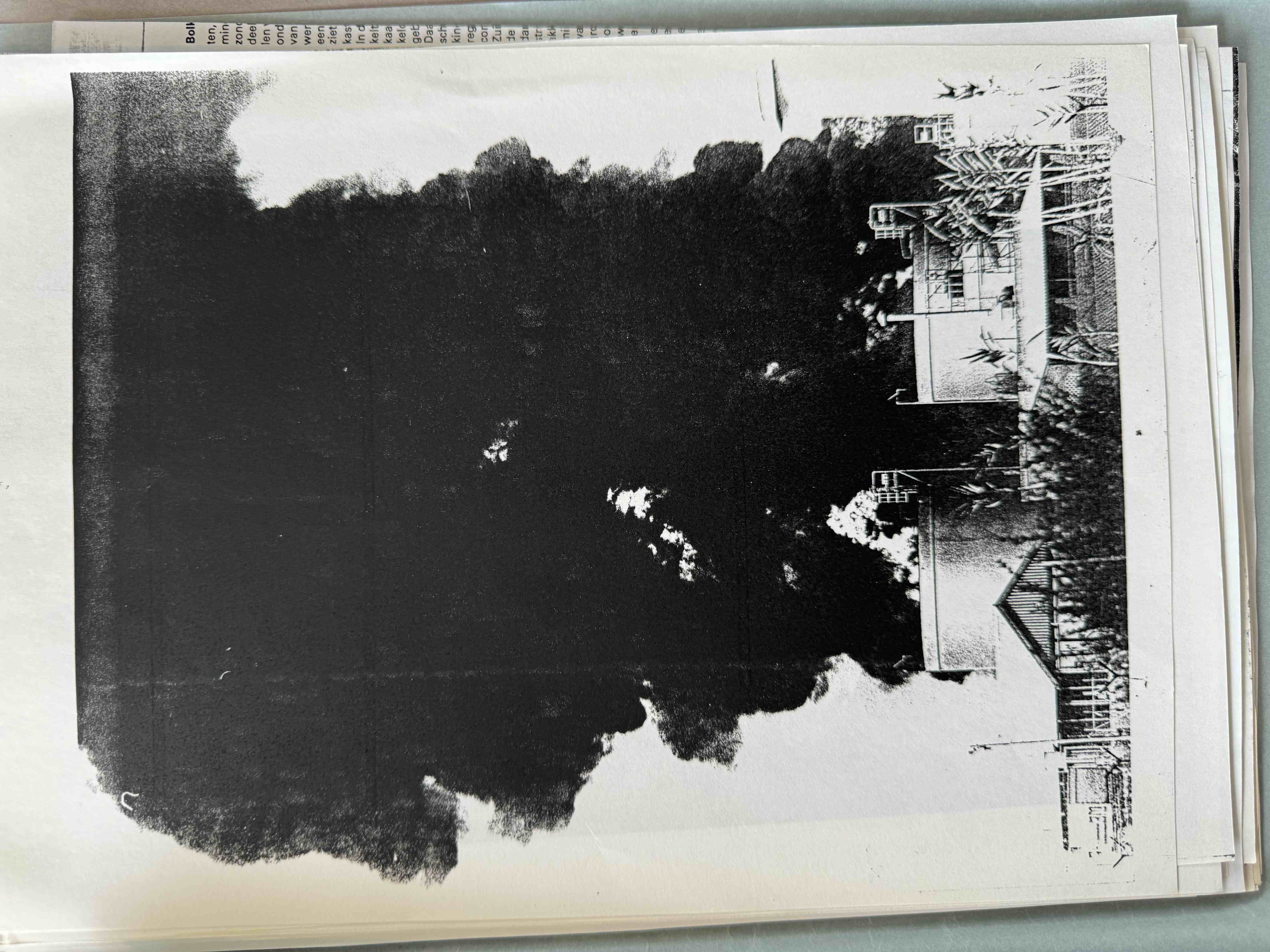
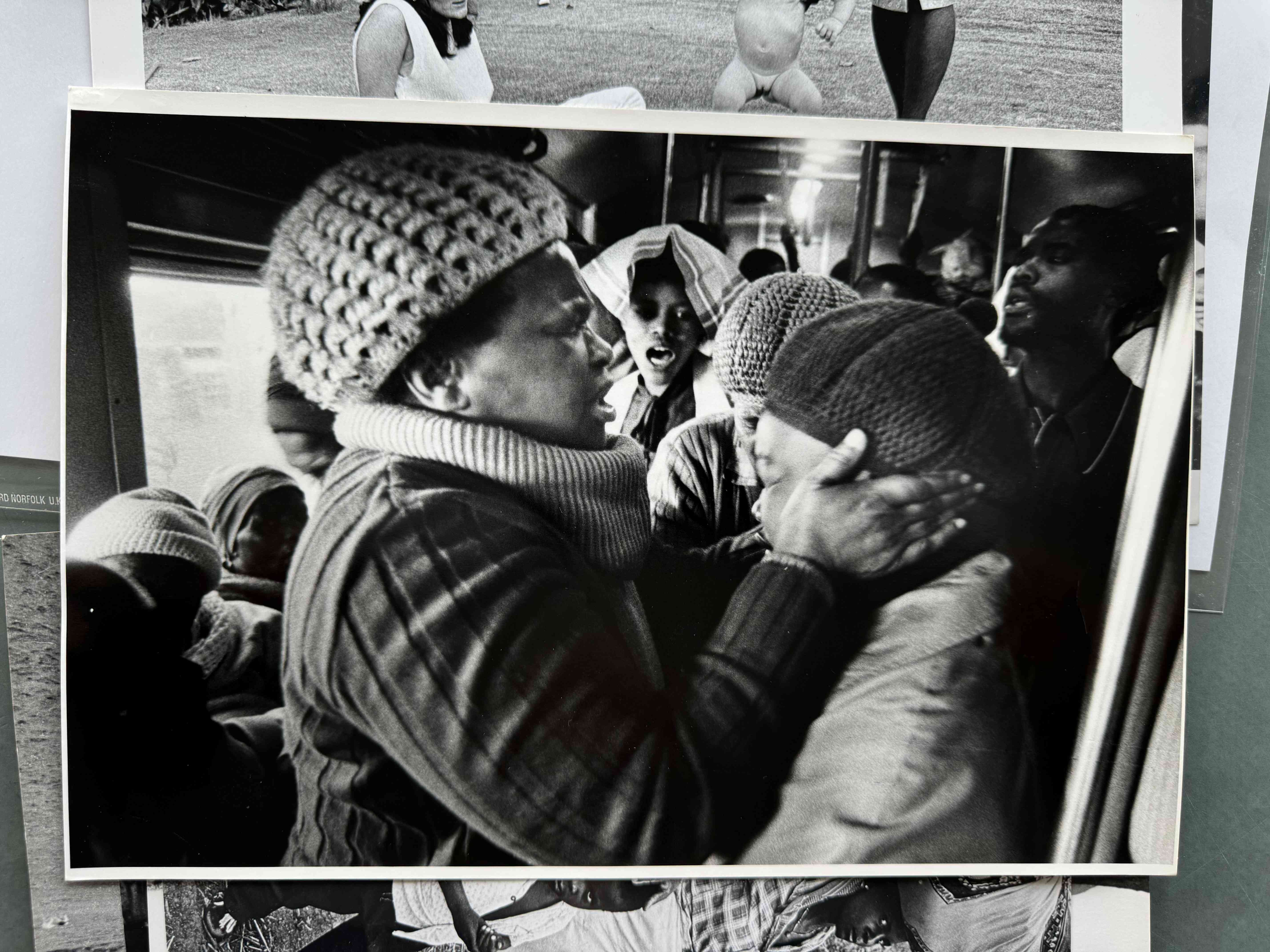
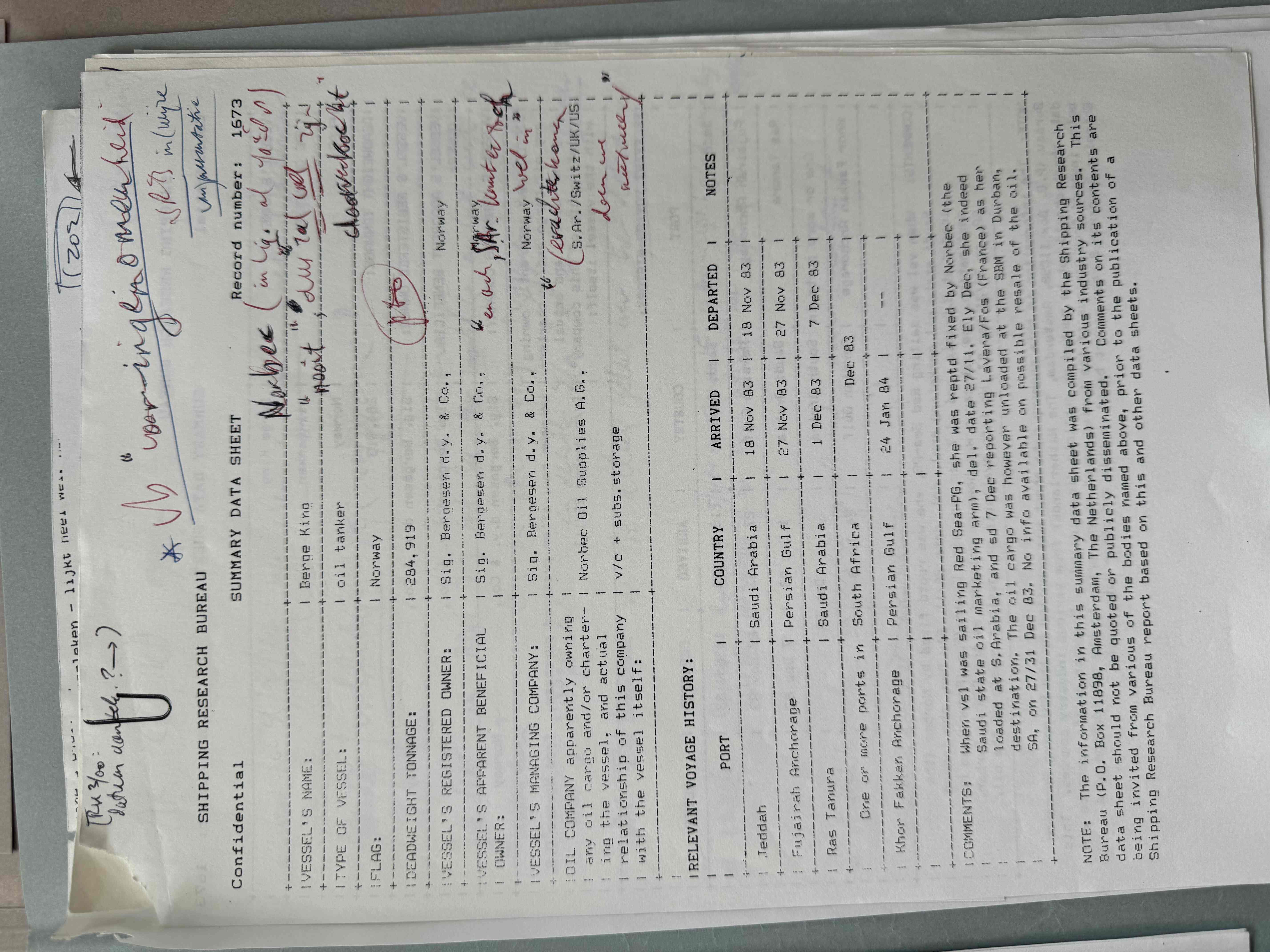
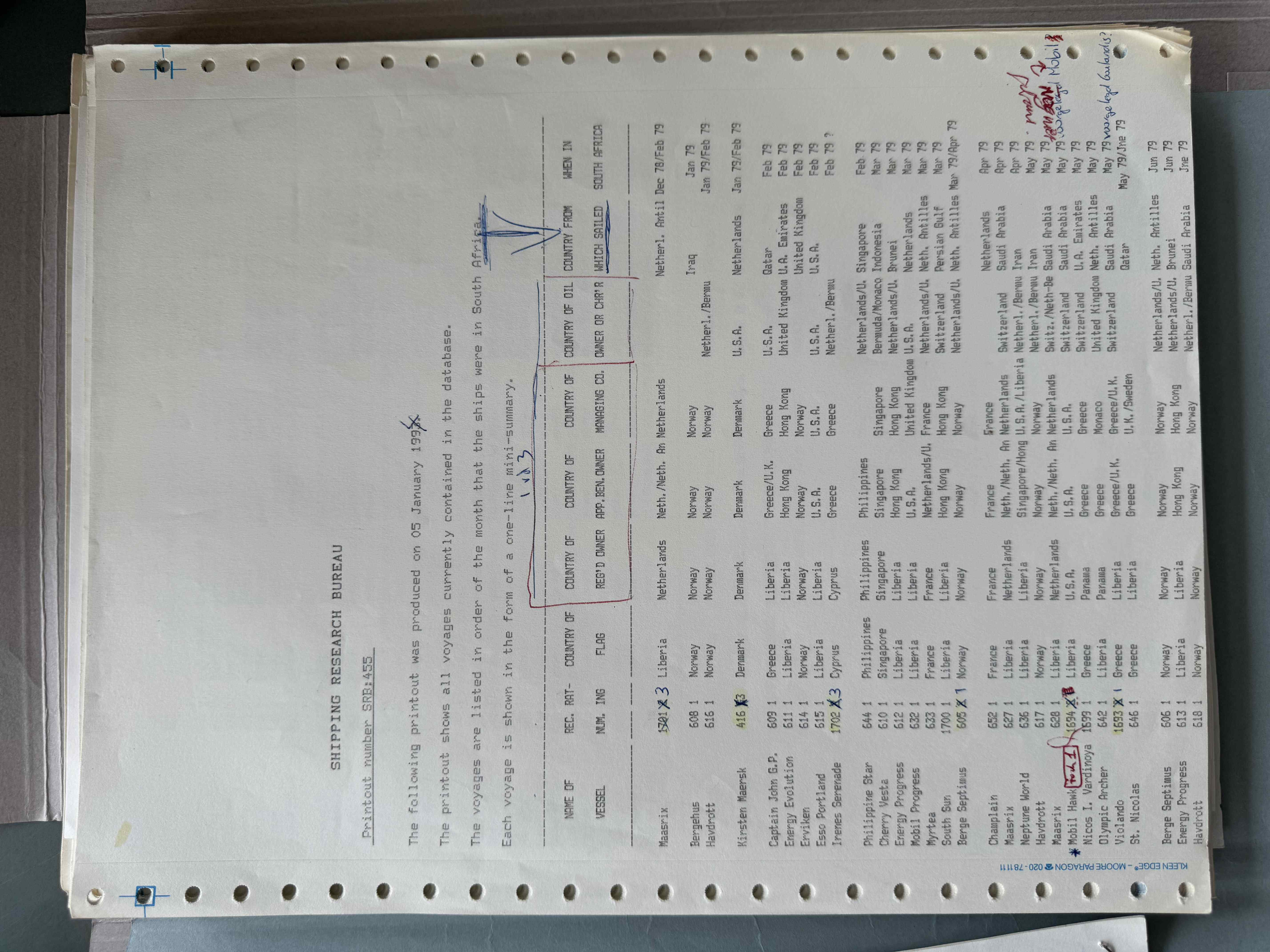
Navigating the archive through it's digital interfaces revealed to us some of it's own legal and technical infrastructural intertwinings. For example, some materials are only available in higher-quality when retrieved through the IISG's own digital image inspector on premises. This inspector allows detailed views of high quality scans, but will do its best to not allow us to download or save the image.
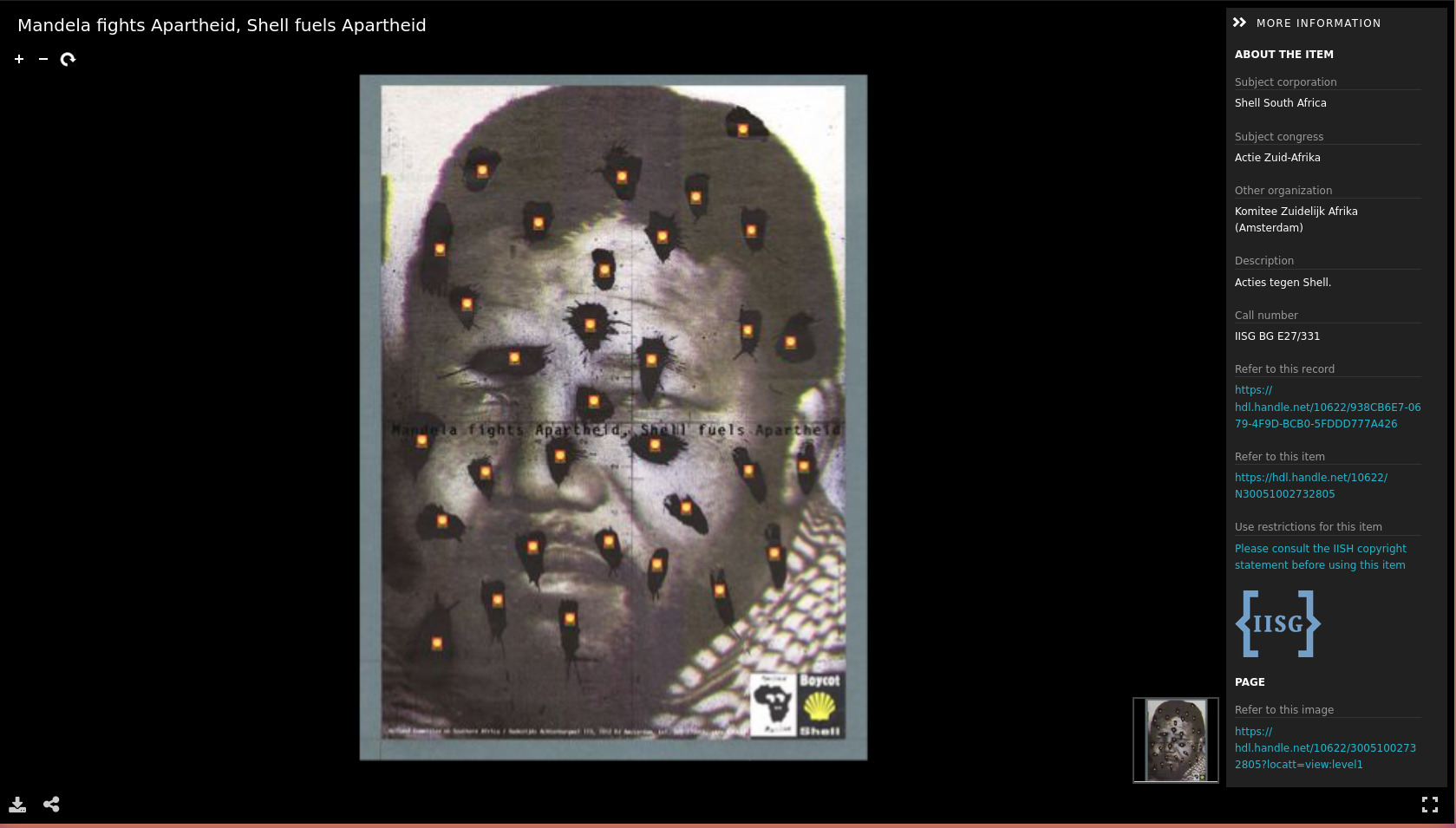
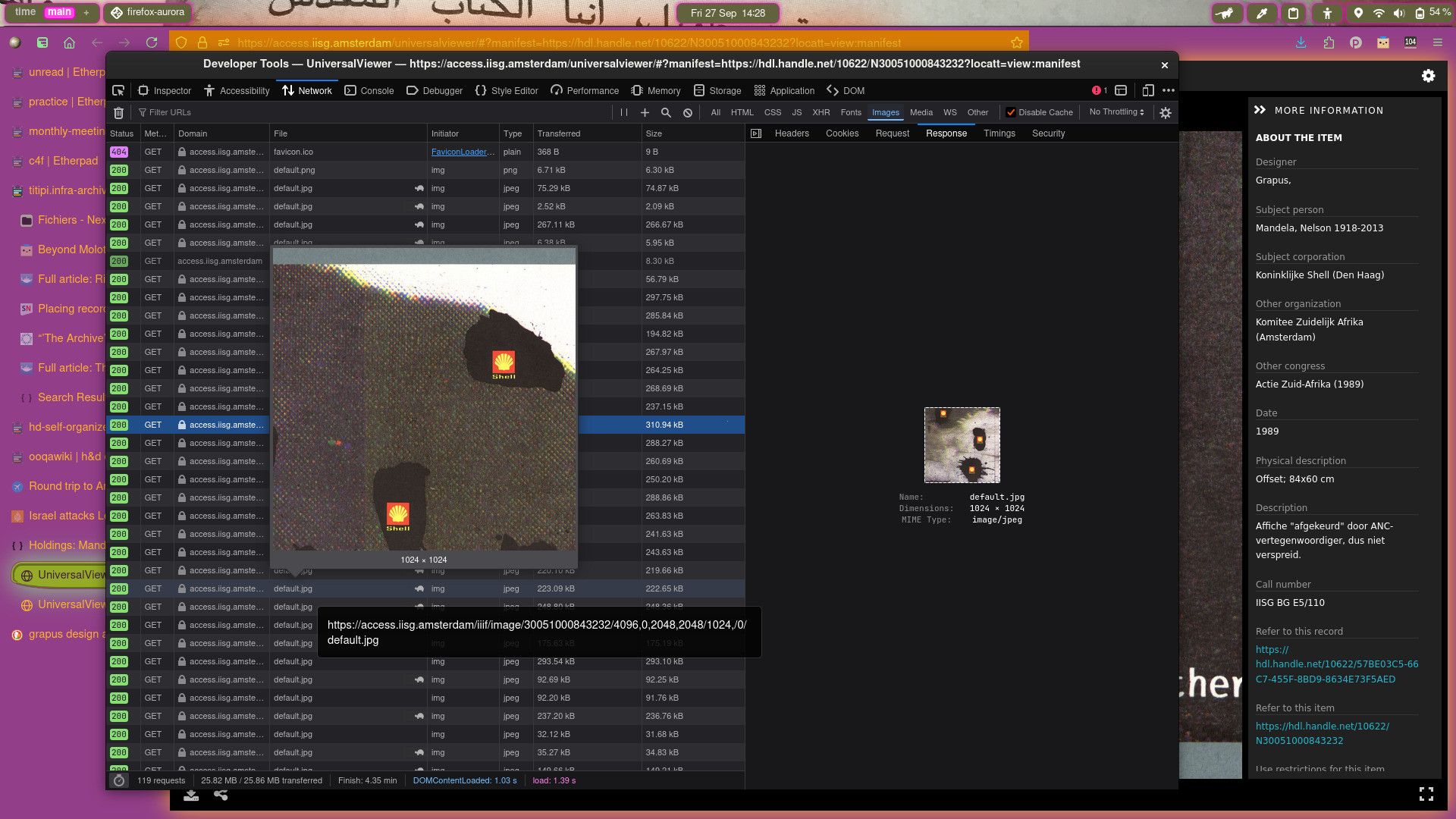
We came across a poster titled "Mandela fights Apartheid, Shell fuels Apartheid", designed by Grapus in 1898 and acquired by the IISG from the Dutch Komitee Zuidelijk Afrika. Looking further into this poster revealed that it was never printed and published. We wanted a copy of this poster for personal use but couldn't reproduce one because of the website's artificial technical limitations. So we wrote a script that fetches the poster chunk by chunk, fragmenting the poster and leaving us with individual blocks. We printed the blocks and "restitched" them into the original full-sized poster.
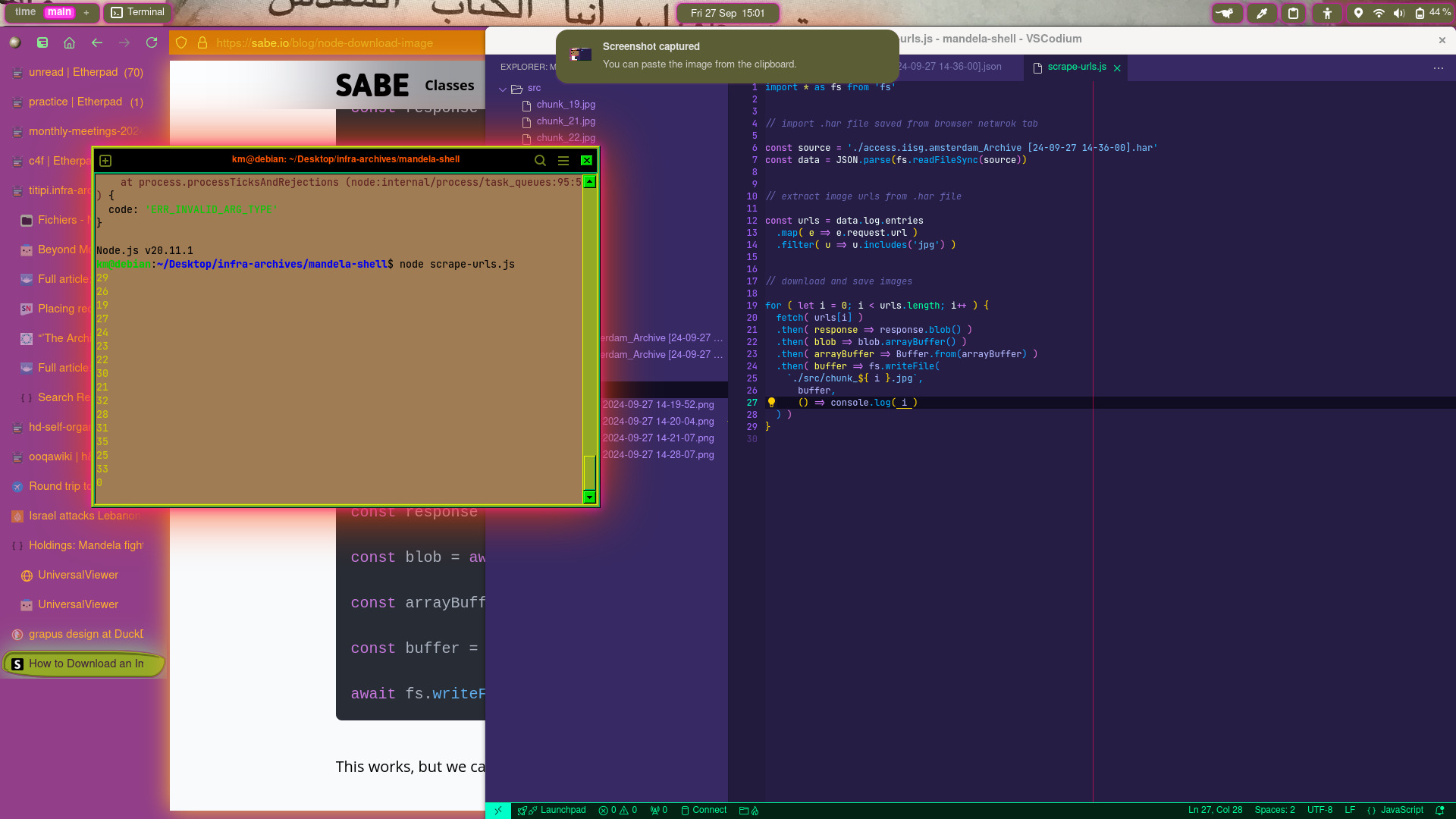
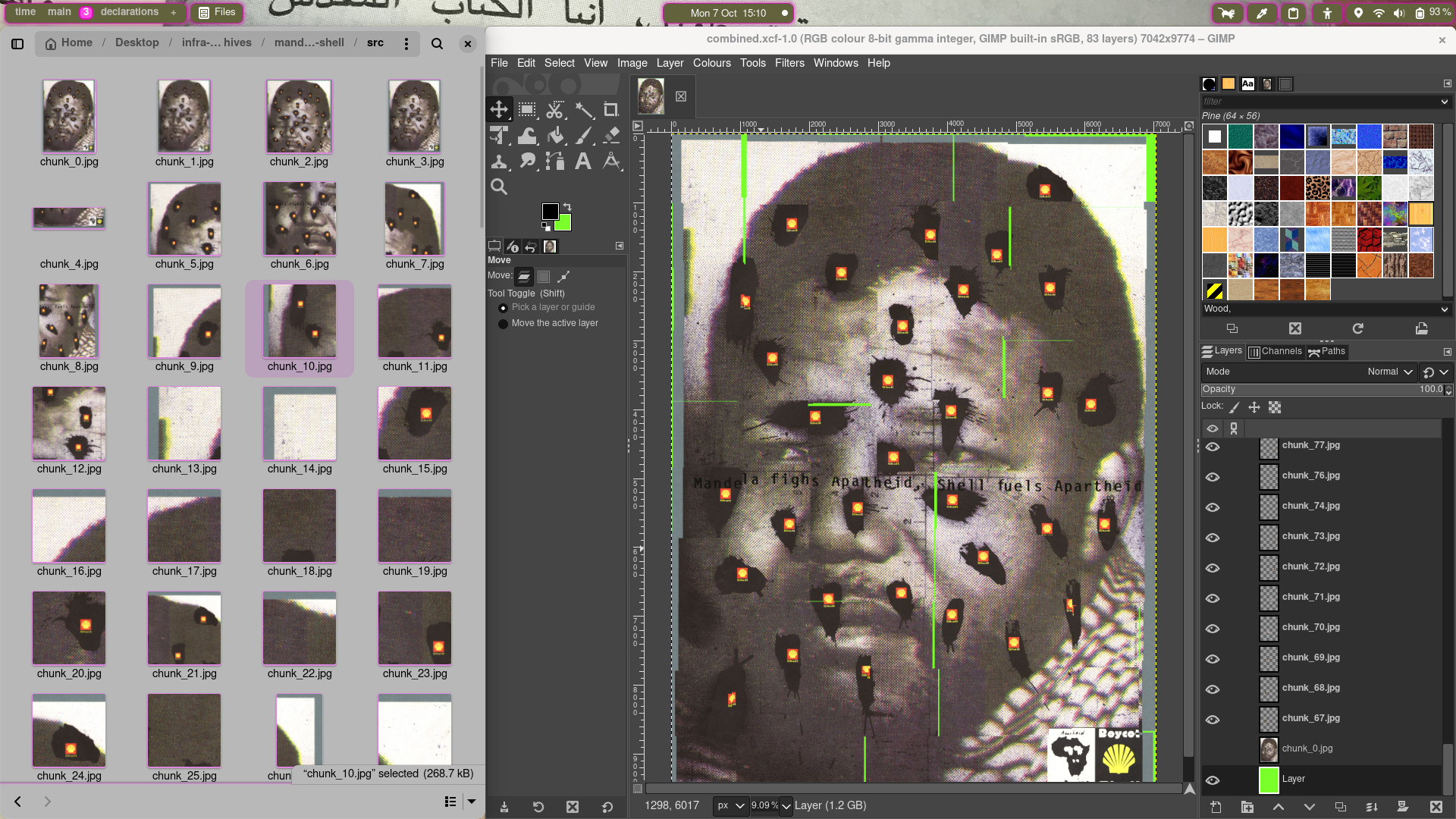
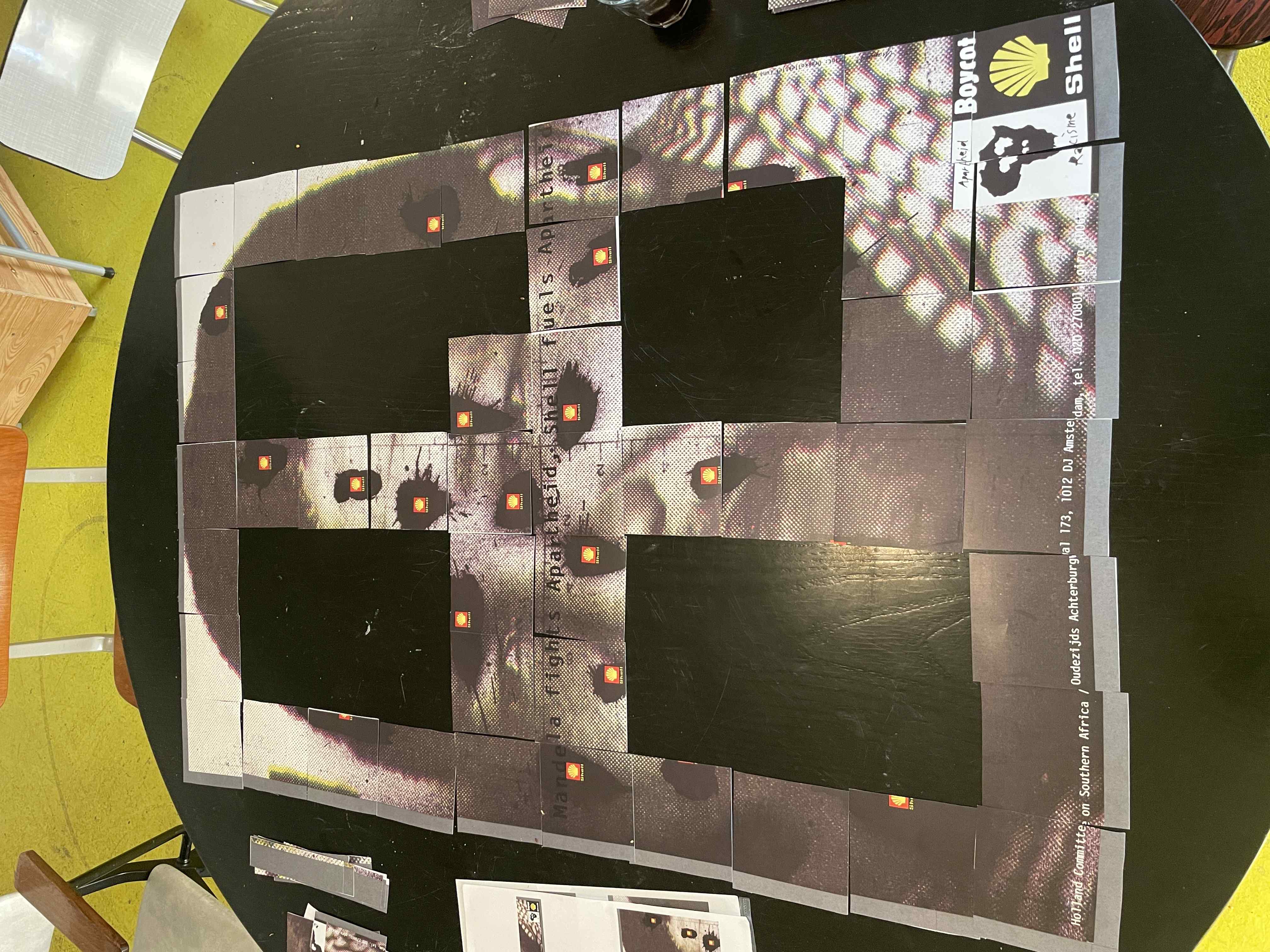
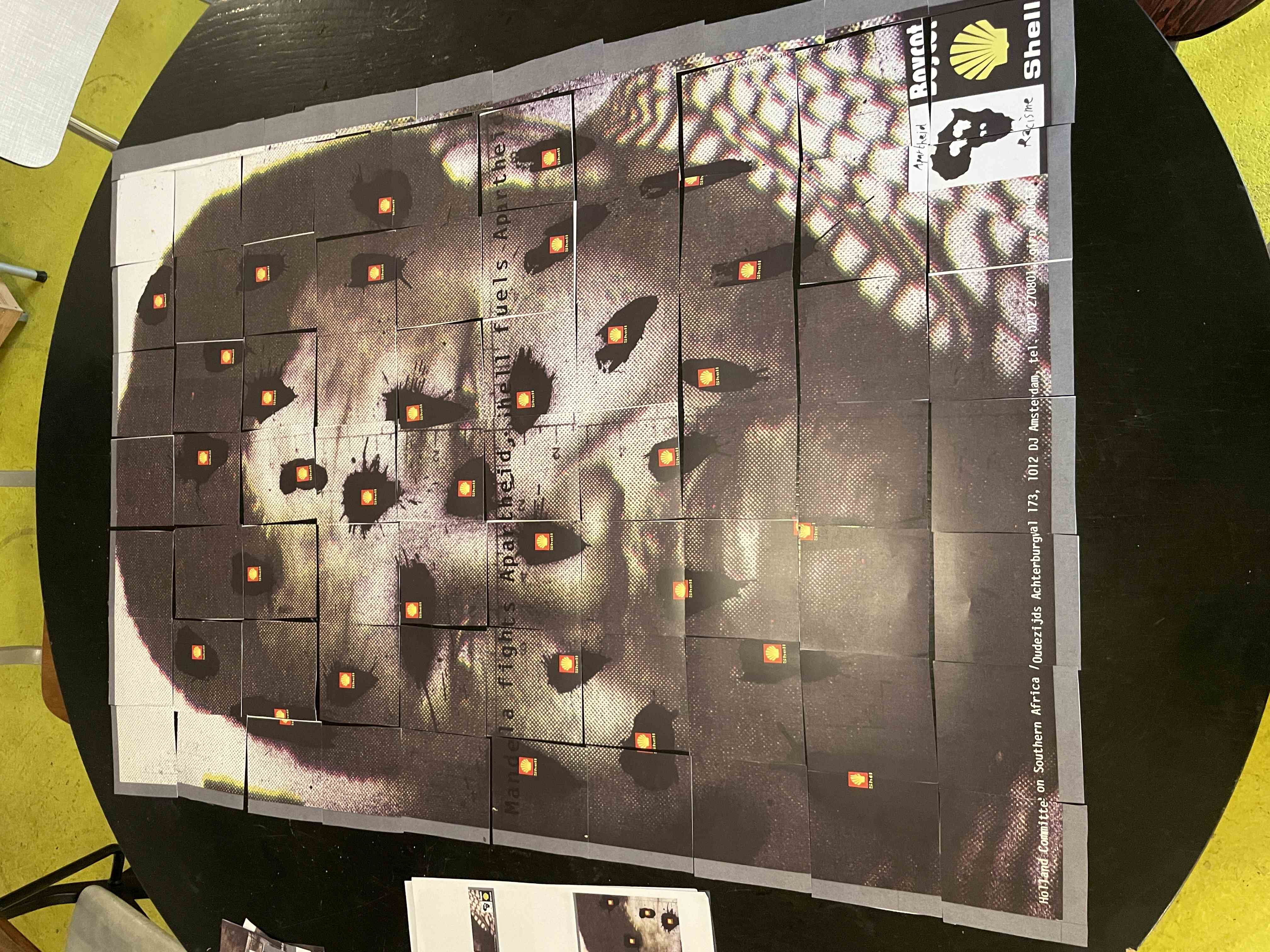
Note: all photos of contents of the archives of the IISG are put here for personal use only, logging this research project, as we work out the re-publishing and crediting rights of these images.
